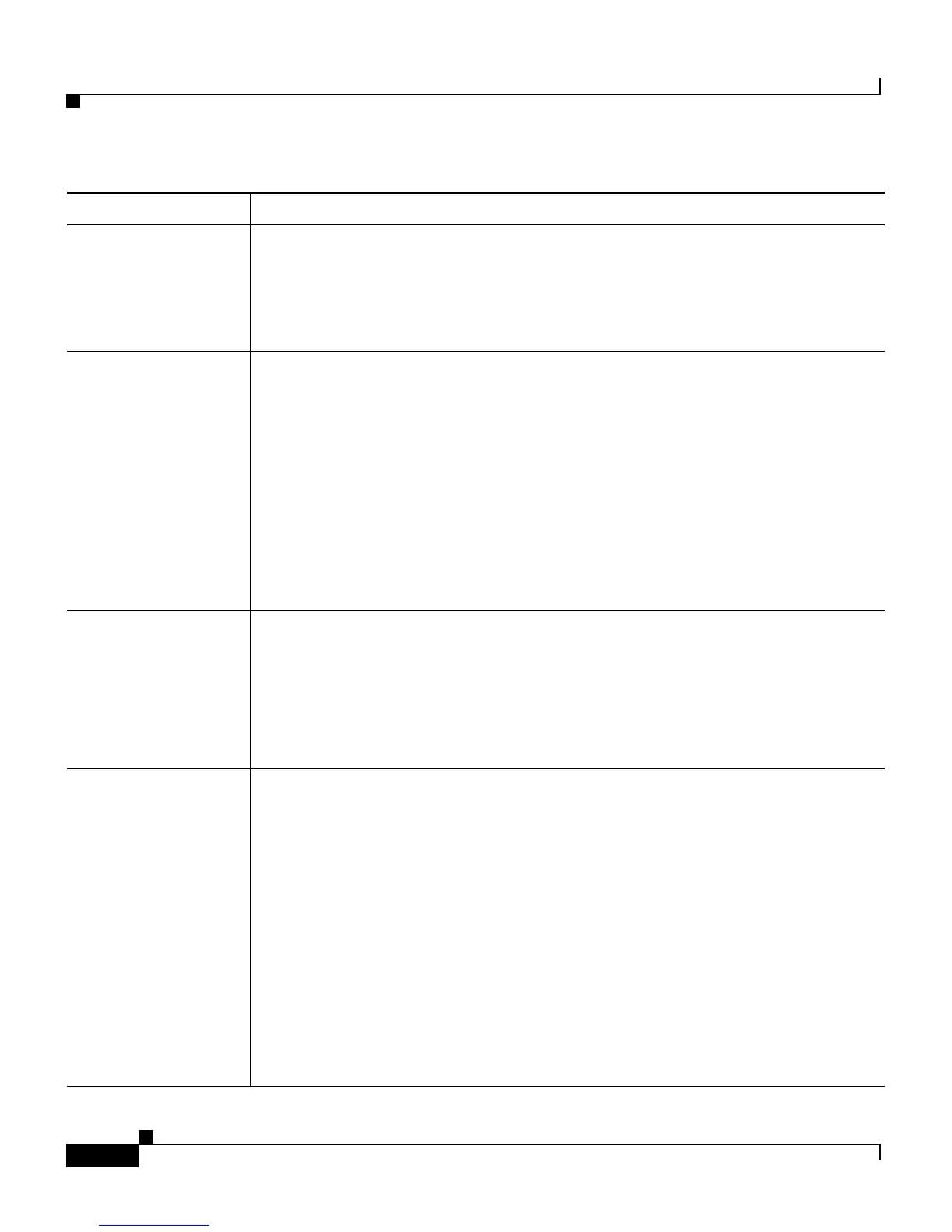Chapter 8 Managing the Cisco CRS System
Managing CRS LDAP Server Information
8-22
Cisco Customer Response Solutions Administration Guide, Release 4.1(1)
Field Description
LDAP Server Type Type of LDAP directory with the following defaults:
• DC Directory
• Microsoft Active Directory
• Netscape Directory
LDAP server host
name, IP address, or
Active Directory
domain
Specify one or more LDAP servers to be used if the primary LDAP server fails.
To do so, enter the host name, IP address, or Microsoft Active Directory domain
of each backup server in the order that they should be used if a failover occurs.
Separate each entry with a comma (,), a semicolon (;), a or a space.
Note Do not use the string localhost to designate the LDAP server.
Defaults:
• DC Directory or Netscape Directory: The host name or IP address of the
LDAP server domain.
• Microsoft Active Directory: The LDAP server domain.
LDAP Server Port Port number on which the LDAP server receives LDAP requests.
Defaults:
• DC Directory: 8404.
• Microsoft Active Directory: 389.
• Netscape Directory: 390.
LDAP administrator
username
Distinguishing Name configured on the LDAP server for the user with
permission to modify the Cisco Unified Communications LDAP tree and object
entries. Enter this information in the format shown as the default value for your
LDAP type. Replace the text in italics with your values, if necessary. In these
formats, ou is an Organizational Unit, o is an Organization, cn is a Common
Name, and dc is a Domain Component.
Defaults:
• DC Directory: cn=Directory Manager,o=cisco.com
• Microsoft Active Directory: cn=Administrator,cn=Users, dc=AD_domain
For example, if AD-domain is myad.cisco.com, the default value would be
cn=Administrator,cn=Users,dc=myad, dc=Cisco,dc=com.
• Netscape Directory: cn=Directory Manager

